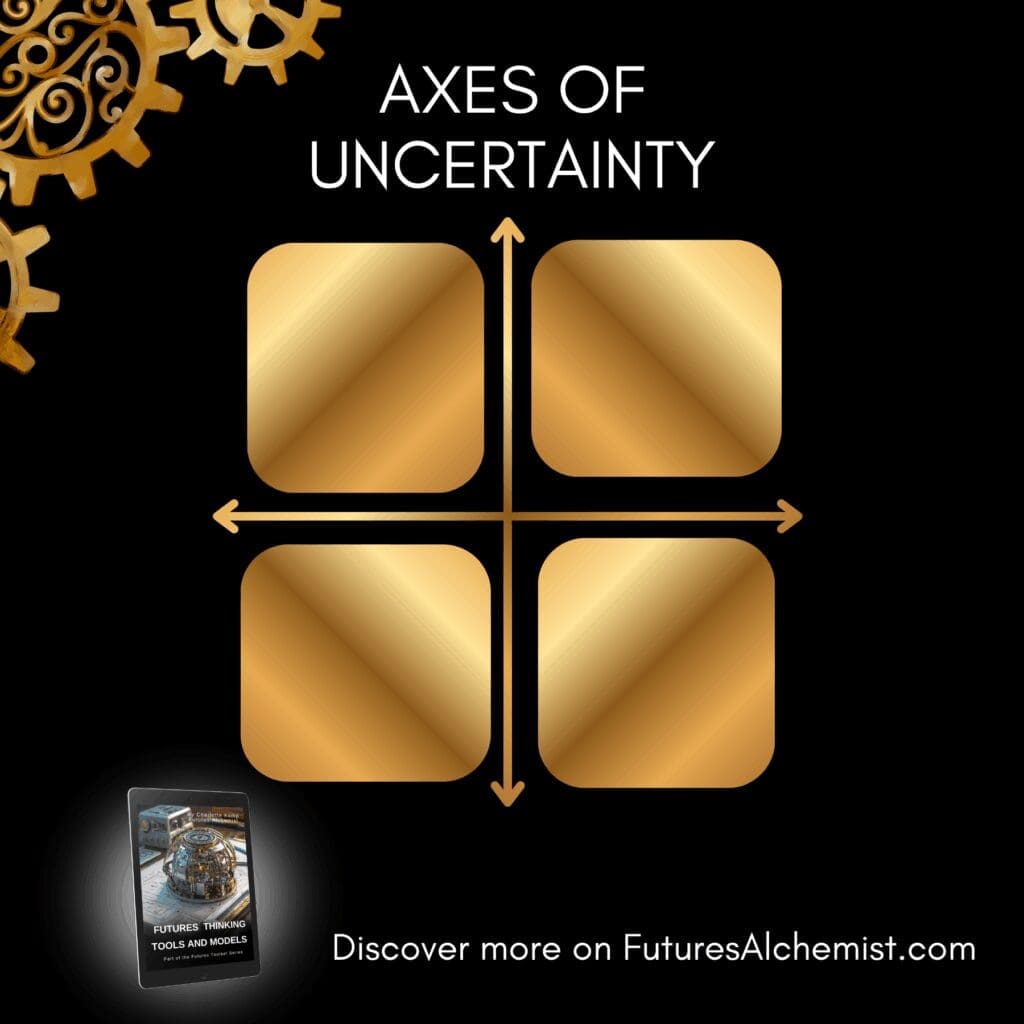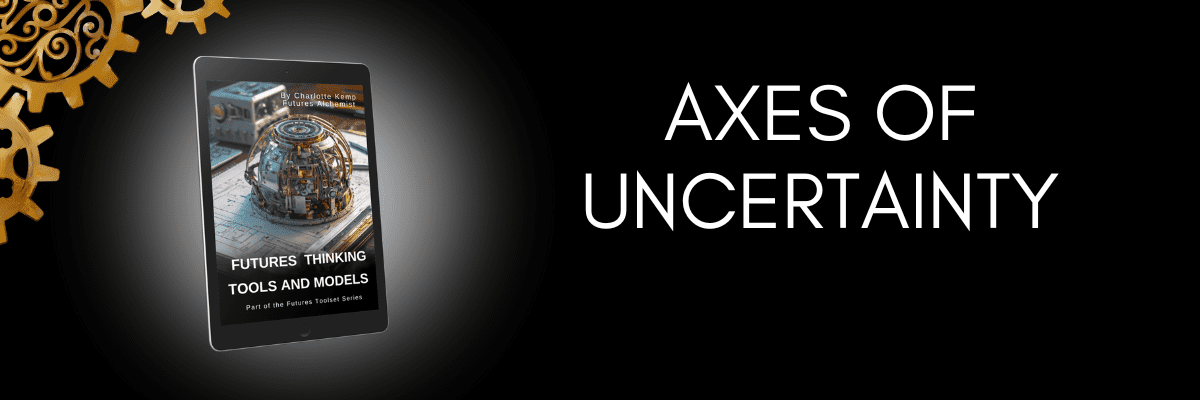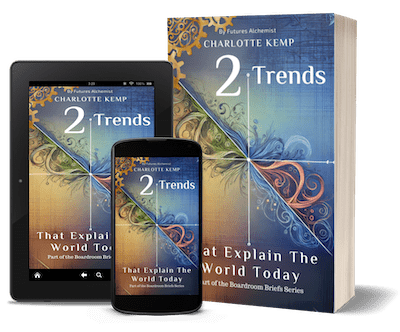
Definition
A foundation for scenario development and strategic insight.
The Axes of Uncertainty model is a core foresight tool used to create scenarios and explore plausible futures by mapping two critical uncertainties on perpendicular axes.
The resulting four-quadrant matrix allows us to construct divergent future worlds based on how those uncertainties might unfold.
This tool is a staple in strategic foresight because it helps us confront ambiguity head-on, by framing uncertainty not as a threat, but as a creative prompt. It’s particularly valuable when long-term planning is required in volatile, complex, or rapidly shifting contexts.
What It Is
The Axes of Uncertainty framework consists of two intersecting lines — each representing a key uncertainty that will shape the future of a system, sector, or issue. These uncertainties are:
- High-impact: Their outcome will significantly shape the future.
- High-uncertainty: We do not yet know how they will resolve.
The two axes each contain a range of possibilities, usually framed as two opposing ends of a continuum. Together, they create four distinct quadrants — each representing a different combination of how those two uncertainties could play out. Each quadrant becomes the foundation of a plausible scenario.
An Example
In the future of work, your axes might be:
Vertical axis: Degree of human/AI collaboration (Low ↔ High)
Horizontal axis: Global economic stability (Stable ↔ Volatile)
These would yield four different futures:
- High AI + Stable economy
- High AI + Volatile economy
- Low AI + Stable economy
- Low AI + Volatile economy
Each quadrant becomes a unique context for exploring implications, opportunities, and risks.
Why It Works
The strength of the Axes of Uncertainty tool lies in its structured simplicity.
It allows us to:
- Map plausible but contrasting futures without relying on forecasts or wishful thinking.
- Stretch our assumptions and challenge default thinking.
- Prepare for multiple outcomes, instead of committing to one predicted future.
- Balance creativity with rigour, combining storytelling with analytical framing.
Most strategic planning is built around a single, preferred or expected future. But the Axes of Uncertainty remind us that the world may not cooperate with our assumptions. This tool provides a disciplined method for creating four credible alternative futures, each of which can inform resilient strategy.
How to Use It
The tool is commonly used in scenario planning processes.
To use it effectively:
- Identify a focal issue or decision — What future do you want to explore? What domain are you trying to prepare for?
- List the key uncertainties — Brainstorm multiple uncertainties that will shape that future. These may include political, economic, technological, social, or environmental factors.
- Select the two most critical and uncertain variables — These form your two axes. Each must be independent and high-impact.
- Label the extremes of each axis — Define each end clearly and meaningfully.
- Map the four quadrants — Explore how the intersection of those axes produces four distinct futures.
- Develop narratives for each quadrant — Build out what each world might look like, who thrives or struggles in it, and what strategic responses might be necessary.
This process can be done in a workshop setting, with post-it notes, whiteboards, or digital canvases. It invites collaborative thinking and can reveal insights that may be hidden in more linear strategy processes.
When to Use It
- During scenario development as part of a foresight strategy.
- To explore strategic tensions in high-uncertainty environments.
- In leadership retreats or innovation labs to break free from present-based assumptions.
- When building future-fit strategies or conducting risk/opportunity analysis.
- To prepare organisations for wild cards or black swan events.
In Summary
The Axes of Uncertainty tool is a cornerstone of futures thinking because it invites us to plan beyond prediction. It equips decision-makers to imagine, design for, and rehearse a range of possible futures — not to control what happens, but to respond with greater agility, resilience, and creativity.
By embracing uncertainty, this tool doesn’t paralyse strategic thinking — it liberates it. It reminds us that uncertainty is not the enemy of strategy, but its most powerful teacher.





